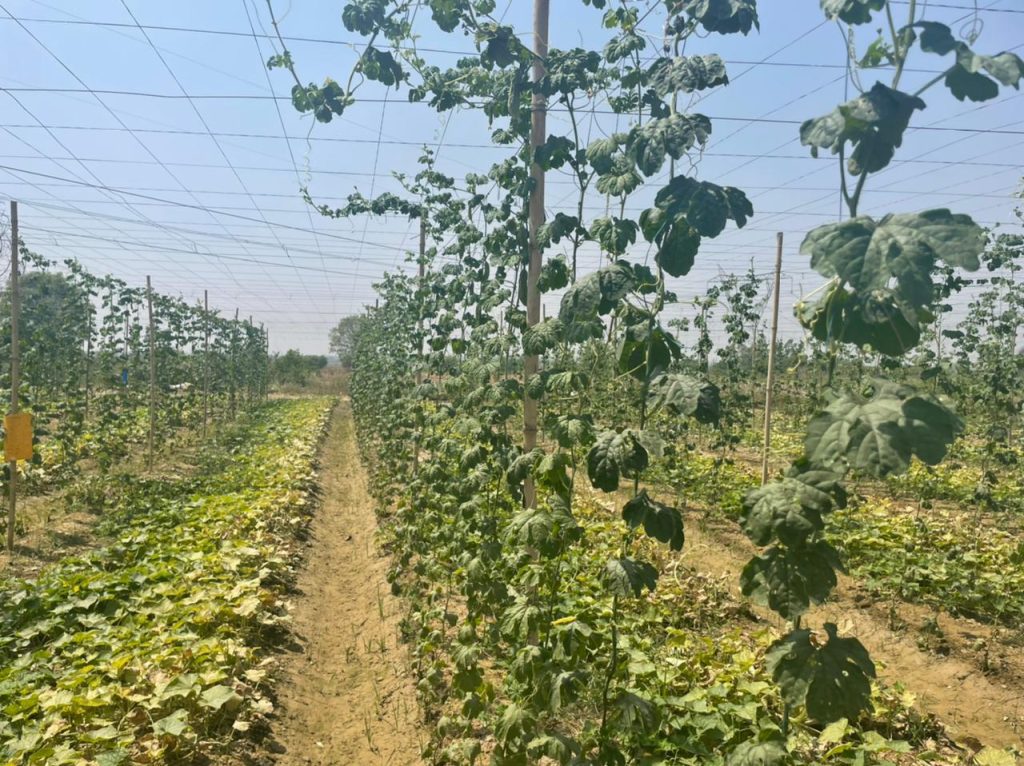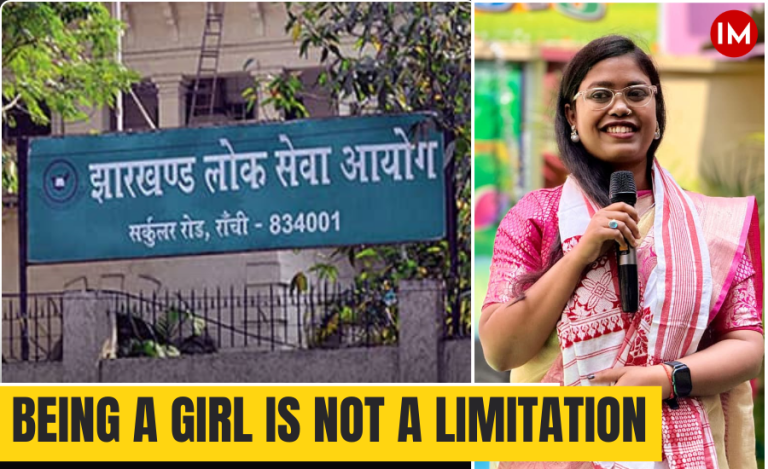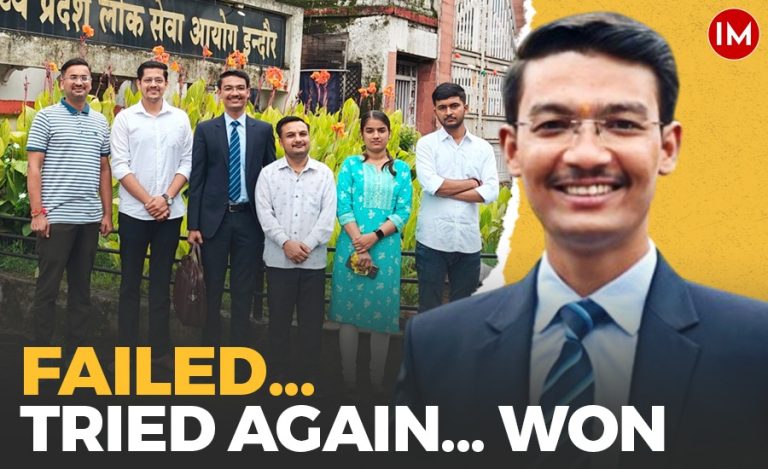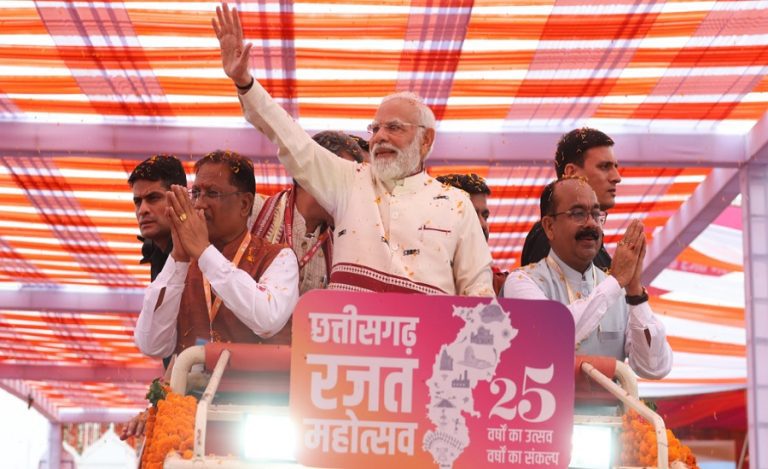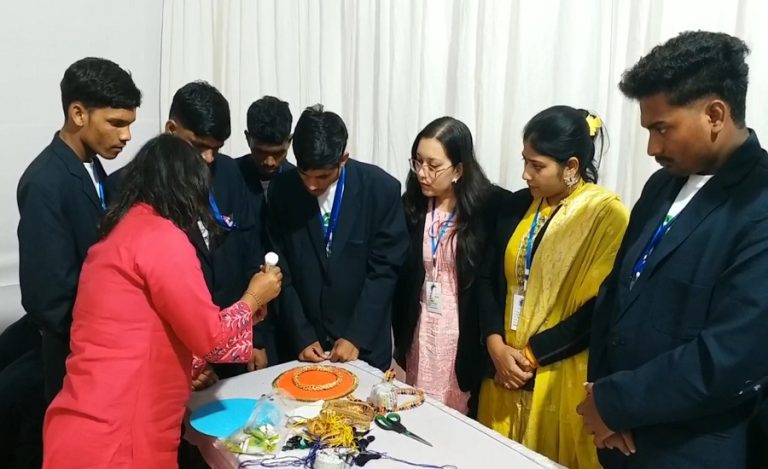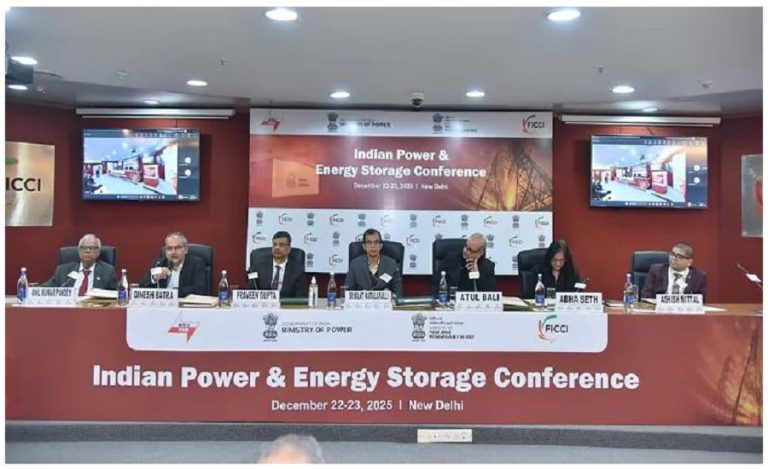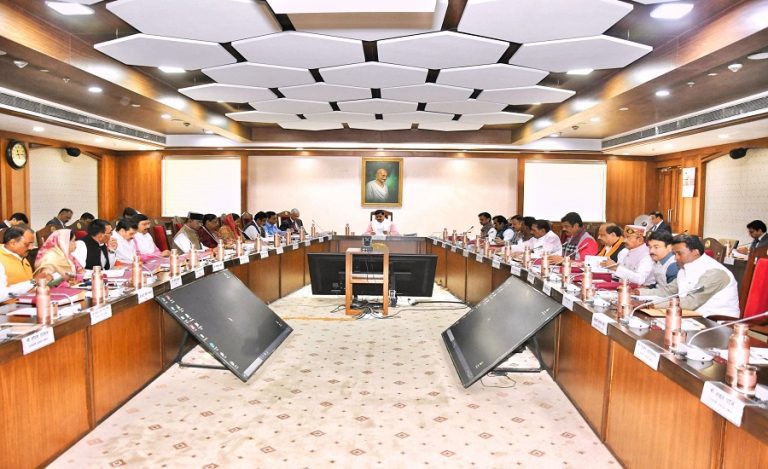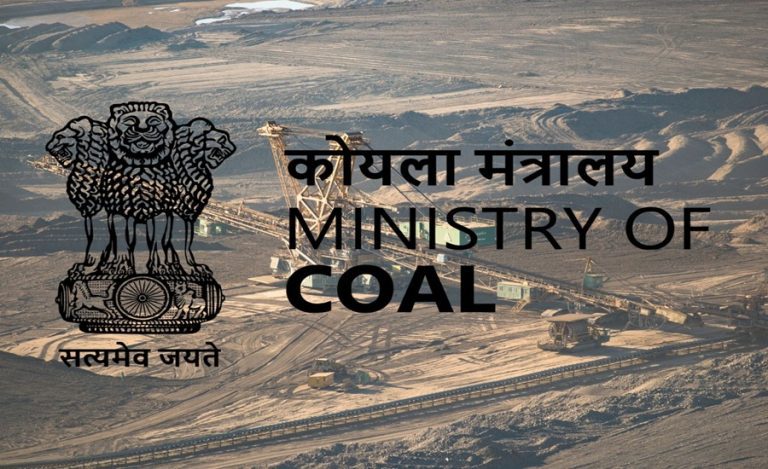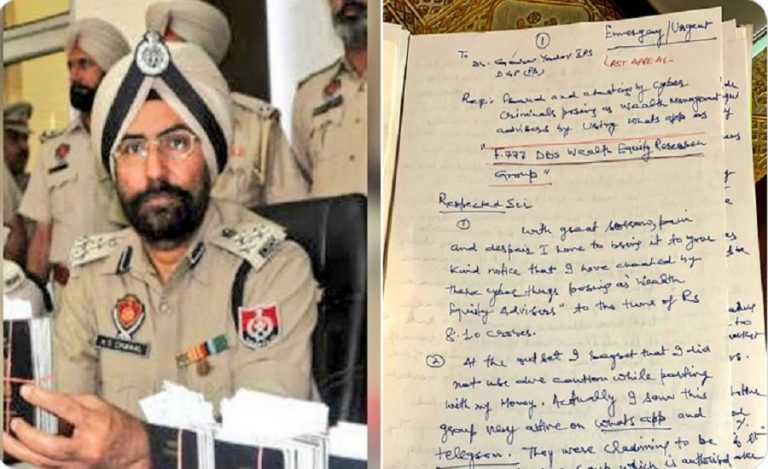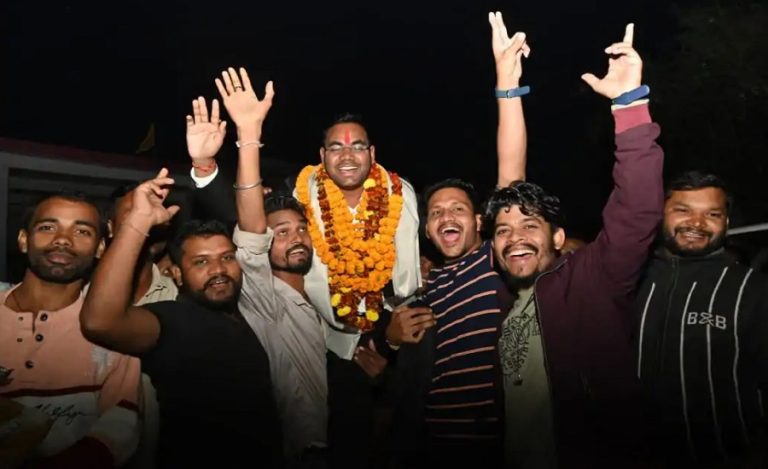In Ghaziabad district of Uttar Pradesh, farmers are increasingly adopting multilayer farming as it brings more yields and income. The Farmers Producer Organisation (FPO) in Muradnagar and few other blocks have successfully made the transition to multilayer farming from traditional methods. Turmeric, cucumber and bitter/bottle gourd are being produced in layers on the same plot of land by the farmers after moving away from sugarcane, a water intensive crop that has created drop in water level in the district.
The district administration, under the guidance of DM Rakesh Kumar Singh and former CDO Asmita Lal, is providing all necessary help to the farmers in adopting this technique. Indian Masterminds spoke to Ms. Lal, who is now posted as ACEO in the Uttar Pradesh State Industrial Development Authority (UPSIDA), to get more details.
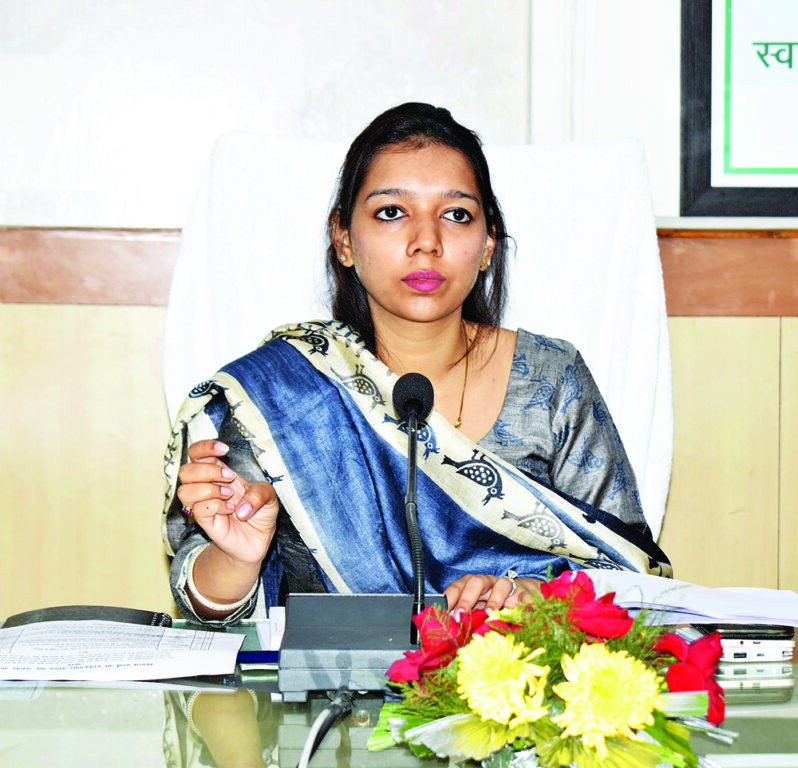
ABOUT MULTILAYER FARMING
Multilayer farming is a modern innovative technique of farming which can boost agriculture production as well as farmer’s income, as many crops are grown simultaneously in the same season in the same land. But it should be done with prudence to ensure one crop does not affect another’s growth. That is why, proper training is important to understand the nuances of multilayer farming.
To understand multilayer farming more easily, we can compare it with a multi-storey building built on a piece of land. If the ground floor is built on the land, then the amount of space available for use increases by the same number of times with each floor that is built on top of it. Similarly, if one crop is cultivated in a field at a time, then the income generated will increase in the same proportion as the number of crops get increased by growing several crops simultaneously on the same land.
Ms. Asmita Lal, who was transferred from Ghaziabad few days back, visited the farmers from time to time to see the multilayer farming progress,when she was the CDO of the district.During her inspection, she interacted in detail with various farmers of FPO. New CDO Vikramaditya Singh Malik is also focusing on multilevel farming and helping farmers at every level.
Ms.Lal said, “Due to continuous urbanisation of Ghaziabad and less agricultural land day by day, farmers of FPO can cultivate more than one crop on the same land at the same time through multilevel farming technique. Apart from saving time and money, this is also generating more income.As a result, more and more farmers of the area are getting inspired to adopt this method.”
Explaining the model, she said that FPO farmers grow 4 to 5 crops on the same land in multiple layers. For example, in the first layer, Arabic turmeric under the ground, in the second layer, cucumber or leafy vegetable or coriander, in the third layer, vine vegetables like bitter gourd, gourd, luffa are grown on scaffold or the ram of the field, and in the fourth layer, fruits like papaya is cultivated.
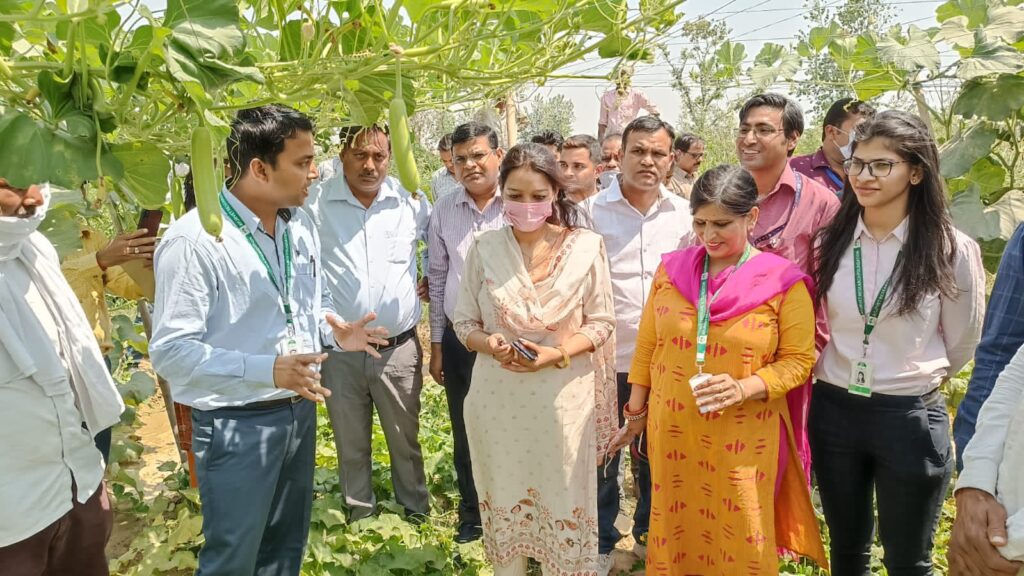
She further said that seeing this model, sugarcane farmers are also getting motivated to switch to vegetable cultivation. In a very short time, the FPO started work on vegetable production, fruit production and medicinal production through the multi-story system.
“I am sure in the future the income of farmers will be doubled as per the statement of Hon’ble Prime Minister, and all the members of FPO will be financially and socially significantly stronger,” Mr. Lal said.
NABARD ROLE
Ms.Lal also informed Indian Masterminds that the role of the National Bank for Agriculture and Rural Development (NABARD) is also important here. Recently, NABARD sanctioned Rs. 18 lakh loan, which will be spent by FPOs for five years in various sections. Continuous efforts will be made by NABARD to attract farmers towards FPOs through training and awareness programmes. Various state level and inter-state tours will be organisedby NABARD and the agriculture department for the members of FPOs. To increase their income, awareness will be created to make licenses for pesticides, fertilizers and seeds and about value addition.
Multi Layer Farming by FPO at Muradnagar Block. Turmeric,Cucumber and bitter/bottle gourd in layers on the same piece of land. Moving away from sugarcane,a water intensive crop.@AgriGoI @UpRuralDev @MoJSDoWRRDGR @JalShaktiAbhyan @upagriculture @CommissionerMe3 @PIBWater @ANI pic.twitter.com/HHBhyFU3DG
— CDO Ghaziabad (@ChiefGhaziabad) April 7, 2022
THE INVENTOR
Multilayer farming was invented by Akash Chaurasia, an organic agricultural scientist, a resident of Sagar district of Madhya Pradesh. He is called the father of multilayer organic farming in India. He said that if multilayer farming is done through organic methods, the income of farmers can increase seven-eight times per acre. He himself earns an income of Rs.10 lakh per acre.
HOW IT’S DONE
In this technique, farming is done in three to four layers. First of all, crops like ginger, turmeric etc. are planted on the ground layer. They can be planted around February. On the second layer, some leafy vegetables are also planted on the ground to provide shade and prevent grass from growing so that moisture is retained and less water is needed. On the third layer, a scaffold is made and a vine crop is grown on it. The vine should be a small leaf one, so that it does not block the sun completely. Like bitter gourd, kundru crop is good for the third layer. At the same time, one can use the fourth layer for papaya, whose plant will grow higher than the scaffold and will bear fruit by going up.
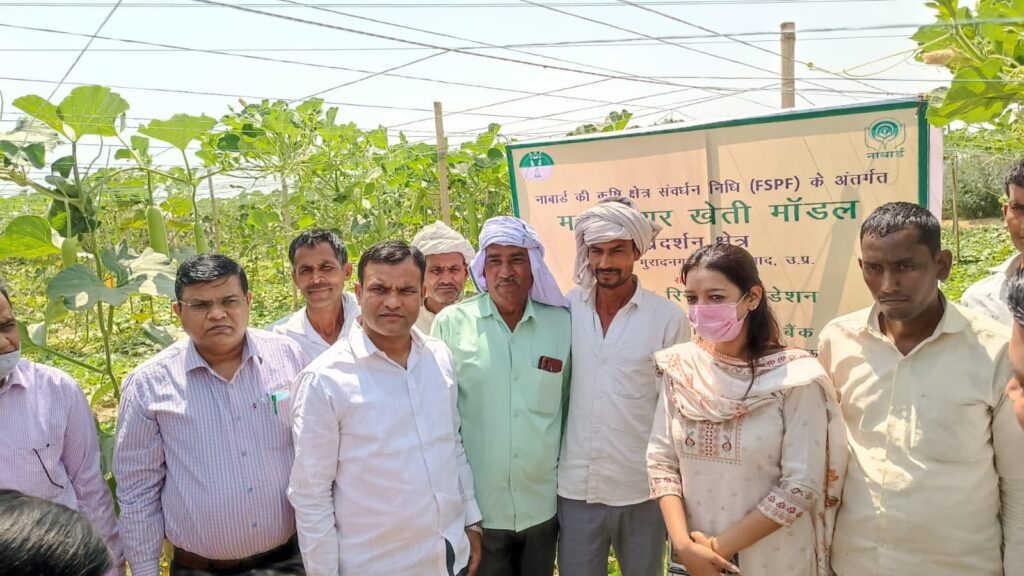
If farming starts from February, then from March to July, one can earn from the leafy vegetable planted on the second layer. From April to end of November, earning starts from the third layer i.e. kundru or bitter gourd crop. Ginger crop is dug up in the month of August and papayas start fruiting from December, which gives fruit till January-February. Altogether, a farmer can get four crops a year through multilayer farming.

